
Carolina Reaper: How To Grow And Use
Since 2017, the Carolina Reaper has held the title of the hottest pepper in the world. Alongside unmatched heat, this pepper also boasts a fruity flavour that makes it highly sought after. Not only that, but it's a joy to grow at home. With a little know-how and care, achieving a harvest of prime Carolina Reapers can be an easy affair.
As the hottest pepper in the world, the Carolina Reaper is undoubtedly a formidable and intimidating chili. But that's not to say it doesn't have many uses! Heat lovers are turning to this insanely flavourful hot pepper to produce sauces, chili powders, or to simply add a fiery kick to any recipe that needs it.
While many of us can go to our local market and pick up some Carolina Reaper products, where's the fun in that? How about growing some yourself! Not only do you get complete control over your plants, but you'll also have an abundance of peppers you can use however you'd like at the end. Sound good? Then allow us to take you through everything you need to know about the Carolina Reaper, including how to successfully cultivate it at home, regardless of prior experience.
What is Carolina Reaper?
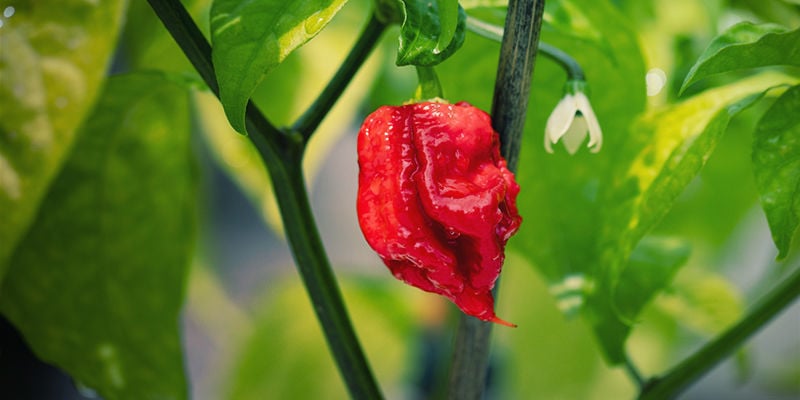
Developed by American chili pepper breeder Ed Currie and grown in South Carolina, USA, the Carolina Reaper was officially recognised by the Guinness World Records as the world's hottest pepper in 2017, and has remained at the top since. This devilishly hot specimen was created by crossbreeding the La Soufriere and Naga Viper peppers. The result is a scorching chili that also boasts some pronounced fruity flavours.
The Carolina Reaper is also known for its distinctive appearance; it has vibrant red colouring that immediately acts as a warning signal for the uninitiated. Not only bold in colour, it typically has a wrinkled, lumpy body that narrows to an accentuated spiky point. It's pretty intimidating in both appearance and heat, but chili fans can't seem to get enough of it. Seen as a rite of passage for any true pepper aficionado, Carolina Reapers are highly sought after primarily for their record-breaking heat.
How hot is Carolina Reaper?
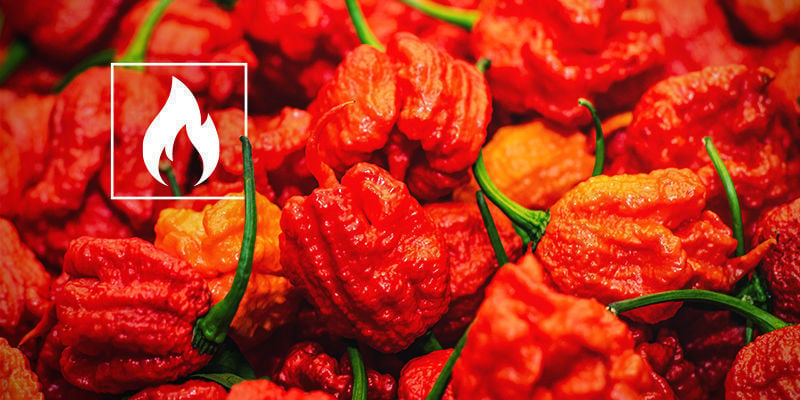
We've mentioned that this is an extremely hot pepper—but just how hot are we talking? Well, this reigning champ has the potential to reach around 2.2 million Scoville heat units (SHU). This measurement system, created by its namesake Wilbur Scoville, forms the basis of how the heat level of a given pepper is determined. Created in 1912, the process essentially involves drying and dissolving the chili in alcohol, then diluting this solution with sugar water until no heat can be tasted. Today, high-performance liquid chromatography (HPLC) is used over SHU, but we maintain the latter as a general measurement system.
As you might imagine, a SHU of 2.2 million is, quite frankly, insane. In comparison, the bell pepper ranks at 0 SHU, the jalapeño pepper ranges from 2,500–8,000 SHU, and the habanero can reach up to 350,000 SHU.
Given the highly competitive race to create the hottest pepper in the world, Carolina Reaper’s ability to hold on to the title since 2017 is an incredible feat. While some have tried to top it, none have been able to exceed the power and consistency of the Reaper. In fact, Ed Currie is looking to best his own creation, as he claims to have created a new chili, known simply as Pepper X, that has the potential to hit an insane 3.18 million SHU. So for how long the Carolina Reaper remains at the top remains to be seen.
How to grow Carolina Reaper
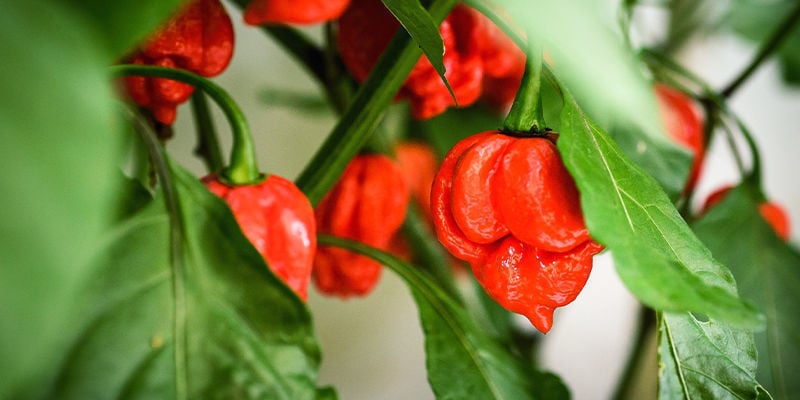
Armed with an understanding of exactly what the Carolina Reaper is capable of, let's get into how to grow these searing hot beauties. Here we'll cover everything you need to know about growing Carolina Reapers at home. Whether you're brand new to the task or have plenty of experience, we're here for you.
Growing Carolina Reaper: equipment & supplies
First things first—you're going to need a few pieces of equipment to get your pepper project underway. Fortunately, the items themselves won't break the bank, and you'll find that you can reuse them again and again. You may even find that you have most of them at home already. In any case, here's what you'll need.
Carolina Reaper seeds
Arguably the most important piece of kit is, of course, your Carolina Reaper seeds themselves! High-quality seeds ensure you start off on the right foot with any pepper project.
Germination kit or small starter pots
You can easily use a germination kit, such as the Smart Start, to kick-start your grow. These contain specially formulated soil that provides your seeds with the perfect environment in which to develop. Similarly, you can use conventional small starter pots to get your seeds going.
Organic compost
Light, loamy soil that drains easily is best when growing Carolina Reapers. Furthermore, organic compost will evade any potentially damaging additives or chemicals. Your plants will thank you.
Larger pots for transplanting later on
Pick up some large pots (10 litres should do) in which to transplant your pepper seedlings later on so they can develop their root system and amass size.
Fertiliser
This is down to choice, and a quick search online will show you many different takes on the best methods of fertilisation. That said, many recommend using a 5-10-5 fertiliser sparingly throughout the grow cycle.
Heat mat/propagator (optional)
Whether you're growing indoors or looking to keep seedlings warm before moving outdoors, a heat mat or propagator may be helpful on your journey. The heat mat will provide a consistent temperature for the root zone, and the propagator will keep small plants contained. However, those living in Mediterranean climates (or similar) may forego this, as the natural heat and light may be enough.
Growing Carolina Reaper
Got all of your equipment and supplies sorted? You're now ready to begin your Carolina Reaper home growing project. Here we'll provide all the steps you need to follow for a successful haul of hot peppers.
1. Germination
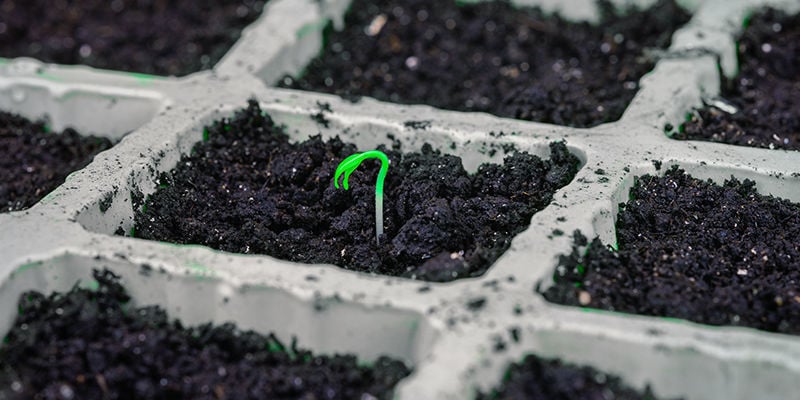
Life for your pepper plants begins right here. As mentioned, you can use a germination kit and plant a seed in each starter pot, transplanting your seedlings to appropriately larger pots later down the line. Alternatively, you can plant seeds into small compost-filled pots from the get-go.
Essentially all that's needed is a moist substrate and a consistent warm temperature of around 28°C. This heat can be provided in a number of different ways, including a heat mat, an airing cupboard, or, for those living in warmer climates, a windowsill. Just be sure to keep an eye on it and ensure that the soil is moist, not damp, throughout.
Of course, these are just a couple of methods, and a simple search online will expose you to many different ways to germinate, albeit with varying results.
2. Managing seedlings
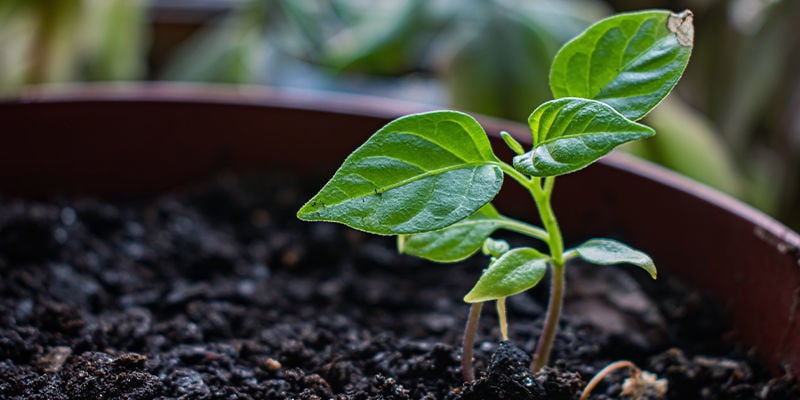
Carolina Reaper seeds typically take about 21 days to sprout into seedlings. Once they appear, it's critical to provide the right level of care so they can flourish. If you've chosen to use a germination kit, chances are they won't provide ample space beyond the 21-day period. With this in mind, it's recommended to place the seedlings in smaller pots so they can grow a little before transplanting into bigger containers for the remainder of their growing cycle.
If you've germinated directly into smaller pots, you've bought yourself a little more time. Just move the containers to a sunny spot by a window that will give them plenty of light and warmth. Or, if this is unavailable to you, a simple setup using a heat mat and grow lights will suffice. Just be sure to keep the soil moist by maintaining a meticulous watering schedule—but don't overwater.
Keep this routine going until your Carolina Reaper plants reach about 15cm tall, at which point it's time to transplant them.
3. Transplanting
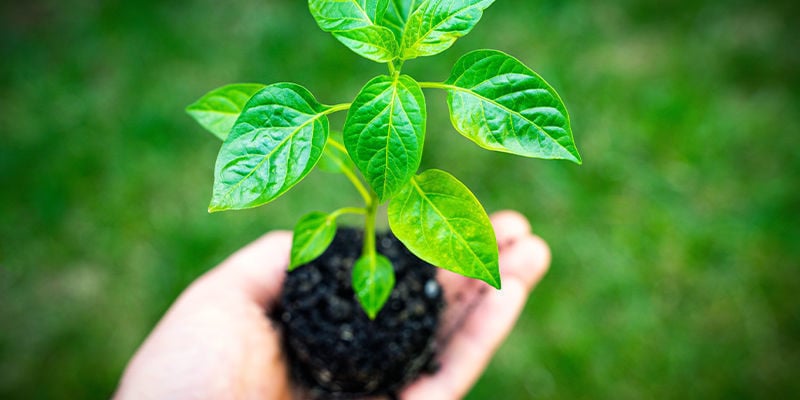
If you're looking to grow in containers, either indoors or out, be sure to select suitably large pots, as Carolina Reaper plants have a tendency to take up some room. A container of about 10l will more than do the trick. Otherwise, outdoor growers can move their plants into a flowerbed if the environment is suitable.
When it comes to transplanting itself, gloves should be worn throughout the process to prevent contamination. This is a delicate procedure, so be patient and take extra care when removing the plant from its surrounding soil.
To begin, loosen the soil around the plant by gently squeezing the pot. Next, place the stem between your index finger and middle finger, or middle finger and ring finger, and then turn the pot upside down to let the plant and all of its soil slide into the palm of your hand. Once removed, place the plant in its new container or flowerbed, and cover any gaps with soil to tightly pack it into place.
4. Care and maintenance
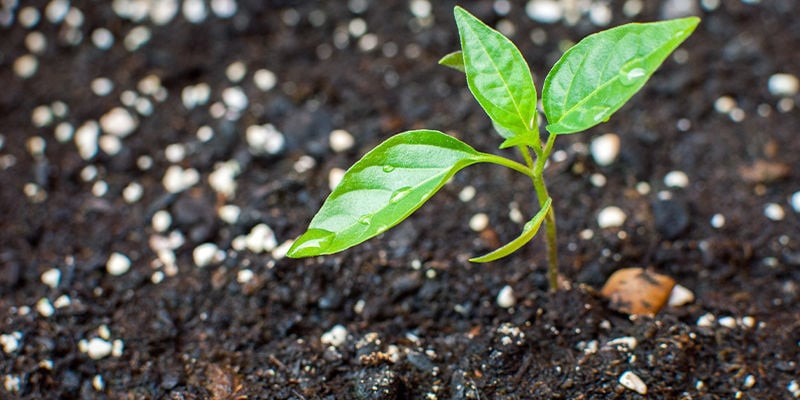
Once in its final pot or flowerbed, it's now a case of providing routine maintenance to make sure your plant is growing to the best of its ability. Fortunately, it's basically the same principle as caring for your seedlings. The most basic and crucial part of upkeep is ensuring the soil is moist throughout the growing cycle. This will help your plant immeasurably. However, it's entirely possible to also add plant food/fertiliser should you want to give your pepper plants an extra boost.
Carolina Reaper plants tend to grow pretty tall, with some reaching heights of around 1.5m. This means a little staking may be in order to keep your plant secure and developing in the right direction. This is doubly important for those growing in conditions that might see a little wind now and again.
5. Road to harvest
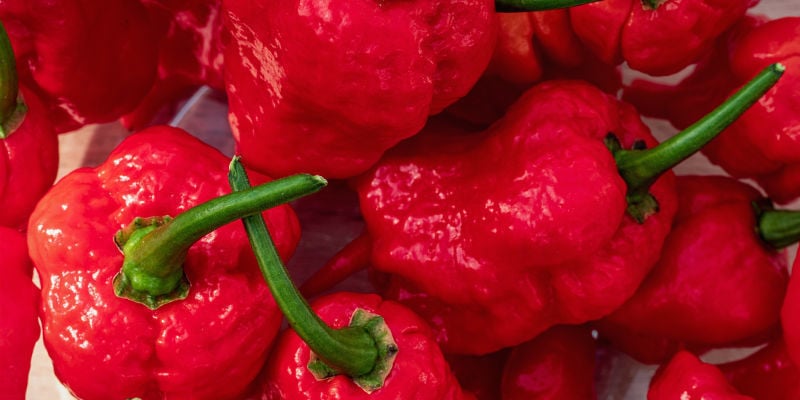
Overall, it takes around 100+ days after fruit set for the Carolina Reaper to be ready to harvest. The path to a successful yield of these peppers is one with a few potential hurdles to consider. As part of your maintenance routine, make sure to regularly check for pests or other problems before it’s too late. Thankfully, many of the potential issues Carolina Reaper plants face are easy to resolve. It just takes a keen eye and quick action to sort out.
How to harvest Carolina Reaper peppers
Carolina Reapers are initially green, and while they can be picked at this stage, it's better to allow them to mature into that deep, rich red colour. As soon as they take on their top-heavy appearance, measuring at 6–7cm in length and about 5cm in width, you’ll know that your Reapers are ripe and ready for the picking.
Wear gloves when removing them from the plant. You definitely don't want to accidentally touch your eyes, face, or other body parts, as you'll be rewarded with a burning sensation that causes significant discomfort. With your gloves on, give each pepper a little twist from the plant. A fully ripe pepper will come away effortlessly. However, you can always use pruning scissors to cut the stems if you prefer harvesting your berries while still green.
How to store Carolina Reaper peppers
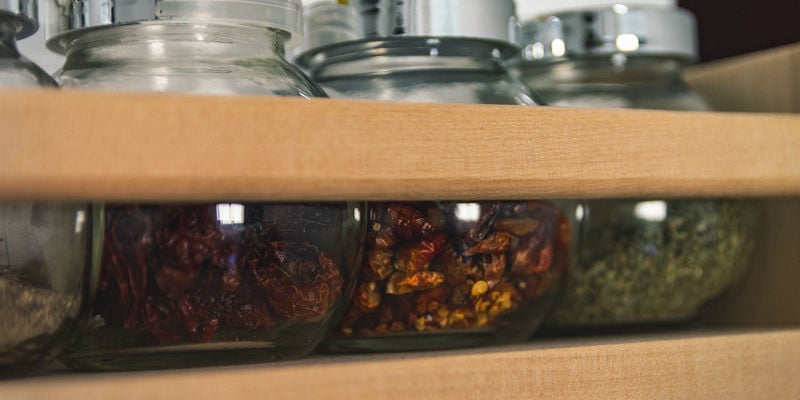
Now that you've collected your Carolina Reapers, how do you store them? Depending on your desires, there are both short and long-term solutions to consider.
If you're looking to enjoy your peppers relatively soon after harvesting, you can simply keep them in a sealable container or ziplock bag and store them at room temperature for about a week. If you're not looking to use them right away, you can keep them in the fridge for around a month, or in the freezer for six weeks or more. You can even dry your chilies to extend their shelf life to a year—or even longer. Some also choose to pickle them, making their shelf life almost indefinite.
The options are plentiful when it comes to storing Carolina Reapers. Hopefully, you'll have plenty from your harvest, so you can try a multitude of storage solutions to have a steady supply of peppers when you need them. Of course, just be sure to use gloves when handling them!
How to use Carolina Reaper chilies
As we've expressed, Carolina Reapers bring intense heat and a fruity flavour, making them suitable for use in cooking. But it certainly goes without saying that a little goes a long way with these peppers.
So while you may not be making recipes such as jalapeño poppers, there are plenty of applications with Carolina Reapers, such as hot sauces, chili oil, powder, and flakes, that allow you to impart some heat to any dish at your leisure.
Are you ready for Carolina Reaper?
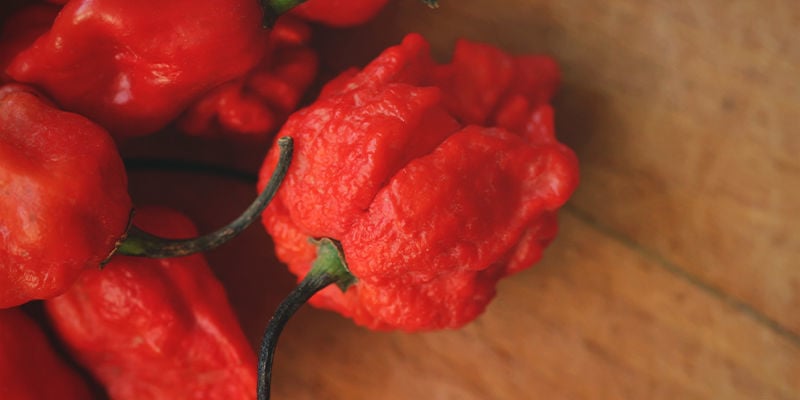
So there you have it; from seed to harvest, that's how you can produce some insanely hot peppers to enjoy at home. All it takes is a little patience and care, and you'll have a bevy of Carolina Reapers at your disposal. While it's possible to pick them up at a shop, allow yourself complete control over your chilies by growing them yourself. This is a rewarding endeavour for the experienced and the newcomer alike.
-
 4 min
18 February 2022
Tips For Growing Hotter Chili Pepper Plants
Surely it's down to chance just how hot your chili peppers can be, right? Well, while various factors determine spice level, there are actually several things you can do to really get the hottest...
4 min
18 February 2022
Tips For Growing Hotter Chili Pepper Plants
Surely it's down to chance just how hot your chili peppers can be, right? Well, while various factors determine spice level, there are actually several things you can do to really get the hottest...
-
 4 min
25 January 2022
Best Companion Plants For Chili Peppers
If you love growing hot pepper plants, but want to do more with your outdoor grow, companion plants are an excellent way to diversify your garden and improve the quality of your pepper harvest....
4 min
25 January 2022
Best Companion Plants For Chili Peppers
If you love growing hot pepper plants, but want to do more with your outdoor grow, companion plants are an excellent way to diversify your garden and improve the quality of your pepper harvest....
-
 5 min
24 January 2022
When And How To Harvest Hot Peppers
You've taken the time to cultivate hot peppers, giving them everything they need to flourish throughout their growing cycle. Yet, arguably the most critical moment is fast approaching; when and how...
5 min
24 January 2022
When And How To Harvest Hot Peppers
You've taken the time to cultivate hot peppers, giving them everything they need to flourish throughout their growing cycle. Yet, arguably the most critical moment is fast approaching; when and how...
-
 7 min
6 September 2021
Jalapeño Pepper: How To Grow And Use
While not as mind-blowingly hot as, say, the ghost pepper or habanero, there's still plenty to love about the jalapeño. It's arguably many people's first step into the world of spicy foods, but did...
7 min
6 September 2021
Jalapeño Pepper: How To Grow And Use
While not as mind-blowingly hot as, say, the ghost pepper or habanero, there's still plenty to love about the jalapeño. It's arguably many people's first step into the world of spicy foods, but did...





 United States
United States











